Winter Reading Guide 2023

It’s cold outside. Why not stay inside and catch up on the latest literature that can help boost your supply chain skillset?
Transforming the Global Supply Chain: Cyber Warfare, Technology, and Politics
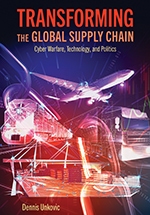 By Dennis Unkovic
By Dennis Unkovic
What issues most affect the global supply chain? Here’s a hint; the pandemic is not one of them. The author contends that four trends—cyber threats, 3-D printing, robotics, and nations protecting domestic economies from foreign competitors—combine to form the MaxTrends that drive the transformations already happening in the modern global supply chain.
From Source to Sold
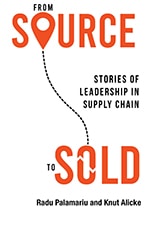 By Radu Palamariu and Knut Alicke
By Radu Palamariu and Knut Alicke
Through insights offered by supply chain experts and thought leaders, this book examines the qualities most supply chain leaders possess. The authors summarize common themes in a system they call the CHAIN (Collaborative, Holistic, Adaptable, Influential, Narrative) Model for supply chain leadership.
Supply Chain Management: Strategy, Planning, and Operation
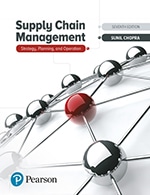 By Sunil Chopra
By Sunil Chopra
Now in its seventh edition, Supply Chain Management introduces readers to the strategies and concepts that provide the tools to tackle supply chain issues. New case studies illustrate how strong supply chain management creates competitive advantages while avoiding the pitfalls that can damage brand reputation.
Demand Prediction in Retail: A Practical Guide to Leverage Data and Predictive Analytics
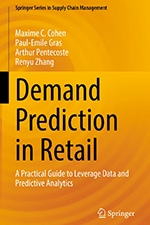 By Maxime C. Cohen, Paul-Emile Gras, Arthur Pentecoste, and Renyu Zhang
By Maxime C. Cohen, Paul-Emile Gras, Arthur Pentecoste, and Renyu Zhang
Big data makes big promises. For retailers, one of the more attractive promises is big data’s ability to help predict demand. But it takes many steps to reach that point. This book helps readers better understand those steps as they master cleaning, assessing, and leveraging data to predict future demand.
Food Supply Chain Management and Logistics
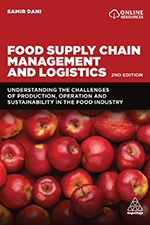 By Samir Dani
By Samir Dani
This primer for food supply chains offers readers a guide to food production, current operational challenges, and future challenges, including sustainability. The author also examines how technologies and concepts, such as food apps, big data, and blockchain, can increase process efficiency. Case studies highlight how industry leaders, including Nestlé and Starbucks, are embracing these concepts to enhance their business models.
Warehouse Management: The Definitive Guide to Improving Efficiency and Minimizing Costs in the Modern Warehouse
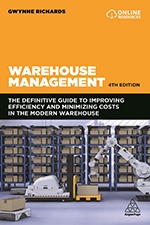 By Gwynne Richards
By Gwynne Richards
Updated to include information on the latest technologies disrupting warehousing—robotics, cobots, and artificial intelligence—this book shows how modern warehouses capitalize on new operating models and processes. The author explains how management strategies that incorporate these developments impact the future of warehousing. Case studies offer insight into how companies benefit from introducing new technology and equipment that help streamline processes.
The Little Black Book of Supply Chains:How Organizations Get, Use, and Dispose of Almost Everything
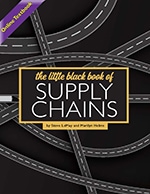 By Stephen LeMay and Marilyn Helms
By Stephen LeMay and Marilyn Helms
Well-publicized shortages of everything from toilet paper to baby formula fueled many of the supply chain problems encountered during the pandemic. Now, rising prices and staff shortages are throwing more monkey wrenches into the mix. But solutions are available. This book offers relatable examples of current issues, a practical guide to understanding how supply chains work, and the best way to respond to challenges.
The Oxford Handbook of Supply Chain Management
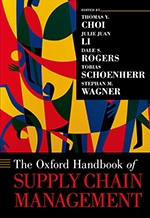 Edited by Thomas Y. Choi, Julie Juan Li, Dale S. Rogers, Tobias Schoenherr, and Stephan M. Wagner (Editor)
Edited by Thomas Y. Choi, Julie Juan Li, Dale S. Rogers, Tobias Schoenherr, and Stephan M. Wagner (Editor)
Here’s a guide to the overarching issues inherent in today’s supply chain, particularly data science, financial flows, human capital, internet technologies, risk management, cyber security, and supply networks. The book examines how supply chain management teams develop the structures and processes for delivering goods and services while meeting downstream demand.
Blockchain and Supply Chain Management
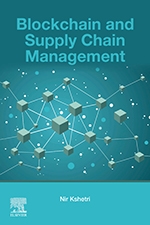 By Nir Kshetri
By Nir Kshetri
How does blockchain fit into the supply chain? One way companies find value is in blockchain’s ability to link technologies such as artificial intelligence, Internet of Things, satellite imagery, and machine vision to create more holistic processes. Blockchain technologies also may be able to help reduce inefficiency, opacity, and fraud. The book highlights the opportunities blockchain provides, discusses barriers to implementation, and examines legal and ethical implications.
Cross-Border Logistics Operations
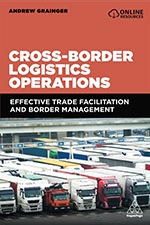 By Andrew Grainger
By Andrew Grainger
Every company involved in cross-border trade must follow certain shipping and customs procedures. Ongoing changes to legislation, standards, and trade agreements can complicate the process; disruptions such as the pandemic and global instability add to the complexity. This book explains the operational and legal aspects of cross-border logistics operations to help companies navigate the cross-border trade and customs landscape.
E-Logistics
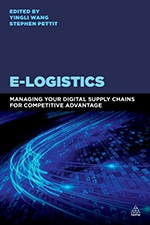 By Yingli Wang and Stephen Pettit
By Yingli Wang and Stephen Pettit
An optimized supply chain nerve system enables smooth information flow in B2C and B2B e-commerce and e-fulfillment, warehouse management, RFID, electronic marketplaces, global supply network visibility, and service chain automation. Through a series of academic analysis and case studies, the authors make the case that advances in information and communication technology provide the foundation for integrated freight and supply chain networks.
Sustainable Procurement: A Practical Guide to Corporate Social Responsibility in the Supply Chain
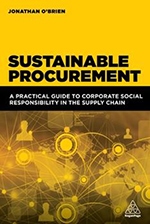 By Jonathan O’Brien
By Jonathan O’Brien
Although the business and legal cases for sustainable procurement are clear, many companies struggle to implement these policies. However, existing tools and approaches may help procurement professionals meet their company’s sustainability goals. The author takes readers through a step-by-step process for sustainable procurement that includes reviewing goods and services bought, mapping the supply chain, and implementing new requirements that hold suppliers accountable.
Inventory Optimization Models and Simulations
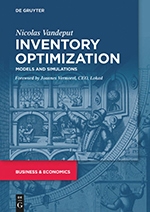 By Nicolas Vandeput
By Nicolas Vandeput
Inventory management emphasizes mathematical models and algorithms, but these may not be the only solutions. Probabilistic simulations also can provide the insight managers need to optimize the supply chain. The book offers a step-by-step plan for implementing these models and simulations, covering both simple and complex projects.
The Art and Science of Demand and Supply Chain Planning in Today’s Complex Global Economy
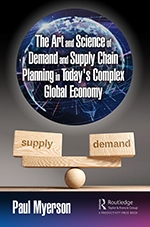 By Paul Myerson
By Paul Myerson
Making demand and supply chain planning work effectively is a delicate mix of art and science. What was once a disjointed, manual, and often inaccurate set of processes is now integrated, timely, and enabled by highly trained people using leading-edge technology. This book provides real-world examples that illustrate how transforming demand and supply chain planning applies to today’s global supply chains.
Reinventing the Supply Chain: A 21st-Century Covenant with America
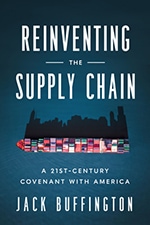 By Jack Buffington
By Jack Buffington
The pandemic didn’t create supply chain problems; it exposed them, the author contends. Difficulties related to product shortages and delivery delays may have been decades in the making. So what went wrong and where do we go from here? The author’s proposed solution is to transform the global supply chain system into a community-based value chain driven by digital platforms for raising capital and implementing blockchain technology.
